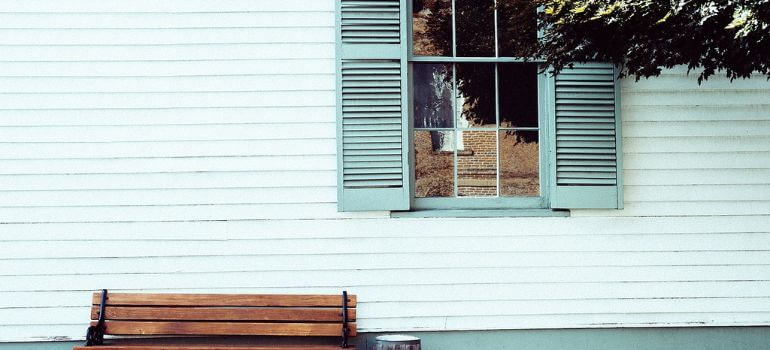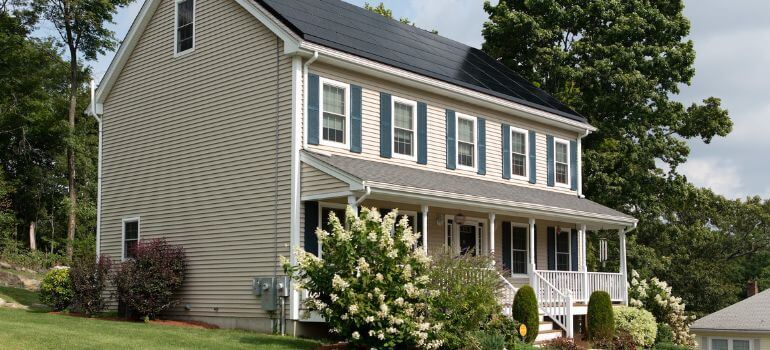Introduction to Hardie Board Siding 4×8
Welcome to the world of Hardie Board Siding 4×8! This robust and beautiful siding material is a fantastic choice for any home. But why choose Hardie Board? Well, it’s not just about its stunning appearance; it’s also about durability and longevity. In this guide, we’ll walk you through the entire process of installing Hardie Board siding on your home.
Tools and Materials Needed
When it comes to installing Hardie Board siding 4×8, having the right tools and materials is essential for a successful and efficient job. Here’s a comprehensive list of what you’ll need:
- Safety Equipment:
- Safety glasses or goggles to protect your eyes from dust and debris.
- Dust mask or respirator, especially when cutting the siding.
- Heavy-duty work gloves to protect your hands.
- Ear protection if you’re using power tools.
- Cutting Tools:
- Circular saw with a diamond-tipped blade for precise cuts.
- Jigsaw for cutting shapes or curves, if necessary.
- Tin snips for trimming and making smaller cuts.
- Measuring and Leveling Tools:
- Tape measure for accurate measurements.
- Carpenter’s pencil or marker for marking cuts.
- Level to ensure your siding is straight and even.
- Chalk line for marking long, straight lines.
- Installation Tools:
- Hammer or nail gun for attaching the siding.
- Caulking gun for applying sealant.
- Drill with a screwdriver bit, if using screws.
- Stapler, if required.
- Materials:
- Hardie Board siding 4×8 panels.
- Corrosion-resistant nails or screws (stainless steel or hot-dipped galvanized).
- Exterior-grade sealant for sealing joints and edges.
- Primer and paint, if you plan to paint the siding.
- Miscellaneous:
- Ladder or scaffolding for reaching higher areas.
- Drop cloths or tarps for protecting the ground and collecting debris.
- Cleaning materials for post-installation cleanup.
Before starting your installation project, ensure you have all these tools and materials on hand. This will help you avoid any delays and make the installation process smoother and more efficient.
Preparation for Installation
Proper preparation is crucial for a successful installation of Hardie Board siding 4×8. Here’s a guide to help you prepare effectively:
- Site Inspection and Cleanup:
- Begin by inspecting the area where you will install the siding. Look for any damage to the existing structure that might need repair before installation.
- Clean the work area thoroughly. Remove any old siding, nails, and debris. Ensure that the surface where you’ll install the siding is clean, dry, and smooth.
- Gather Tools and Materials:
- Collect all the necessary tools and materials listed in the “Tools and Materials Needed” section. Having everything at hand will streamline the process.
- Safety Precautions:
- Safety should be your top priority. Equip yourself with safety glasses, gloves, a dust mask or respirator, and other protective gear.
- Ensure that your workspace is safe and clear of any tripping hazards.
- Measuring and Planning:
- Measure the area where you will be installing the siding. This helps determine how much material you’ll need and assists in planning the layout.
- Sketch a rough layout of how the siding will be placed. Plan the positioning of seams and joints for both aesthetic appeal and structural integrity.
- Checking Wall Condition:
- Examine the walls to ensure they are in good condition. The siding will need a flat, stable surface for installation.
- Repair any damage to the walls and ensure they are structurally sound before proceeding.
- Weather Considerations:
- Check the weather forecast. It’s best to install siding in dry, mild conditions. Avoid installing in extreme temperatures or wet conditions, as this can affect the installation.
- Preparing the Siding:
- If the Hardie Board siding has been stored elsewhere, move it to the installation site. Store it flat to avoid bending or warping.
- Acclimate the siding to the environment where it will be installed for at least 48 hours prior to installation.
- Setting Up a Cutting Station:
- Designate a specific area for cutting the siding. This area should be well-ventilated to manage dust and debris effectively.
- Set up your saw and ensure it’s equipped with a diamond-tipped blade suitable for cutting Hardie Board.
- Waterproofing:
- If you’re installing siding over a stud wall, make sure there is a weather-resistant barrier in place to protect against moisture.
- Seal any gaps or cracks in the wall to prevent water infiltration.
Step-by-Step Installation Guide
Installing Hardie Board siding 4×8 can be a rewarding DIY project if done correctly. Follow this detailed step-by-step guide to ensure a successful installation:
- Preparation:
- Safety First: Always wear your safety gear, including goggles, dust mask, and gloves.
- Site Preparation: Clear the area where you will be working. Remove any old siding, nails, and debris. Ensure the surface is clean, dry, and flat.
- Measuring and Planning:
- Measure the area where the siding will be installed to determine how many Hardie Board panels you’ll need.
- Plan the layout of your siding, considering the placement of seams for the best aesthetic and functional fit.
- Cutting the Hardie Board:
- Measure and mark the cutting lines on the Hardie Board panels using a carpenter’s pencil or marker.
- Use a circular saw with a diamond-tipped blade to cut the panels. Remember to wear a dust mask and safety goggles during this step.
- Installing the Starter Strip:
- Install a starter strip at the base of the wall. This helps ensure your first row of siding is level and provides a solid base for the rest of the installation.
- Attaching the Siding:
- Start at the bottom and work your way up. Align the first Hardie Board panel with the starter strip.
- Nail the panel to the wall using corrosion-resistant nails. Nails should be placed about 1 inch from the top of the siding and every 16 to 24 inches along the studs.
- Overlapping and Sealing Joints:
- When installing the next panels, make sure to overlap the seams by at least 1 inch.
- Apply exterior-grade sealant to all joints and seams for waterproofing.
- Cutting and Fitting Around Windows and Doors:
- Measure and cut the siding to fit around windows and doors. Use a jigsaw for more intricate cuts.
- Ensure that there is a small gap between the siding and the frames of windows and doors, which should be sealed with caulking.
- Installing Trim:
- Once all the siding is in place, install trim around windows, doors, and corners. This not only adds to the aesthetic but also helps protect against water infiltration.
- Final Touches:
- Inspect your work, making sure every panel is secure and all seams are properly sealed.
- Clean up the work area, disposing of any offcuts and debris appropriately.
- Painting (if applicable):
- If you plan to paint your Hardie Board siding, now is the time to do it. Use exterior acrylic latex paint for the best results.
Tips for a Successful Installation

Installing Hardie Board siding 4×8 can be straightforward if you follow the right techniques and tips. Here are some essential tips to help ensure your installation is successful and your siding lasts for years to come:
- Read Manufacturer Instructions: Before starting, thoroughly read the Hardie Board installation instructions provided by the manufacturer. These instructions can offer specific guidelines that are crucial for warranty and performance.
- Proper Storage of Materials: Store your Hardie Board siding flat and off the ground before installation. This prevents warping and damage to the boards.
- Use the Right Tools: Ensure you have all the necessary tools, especially a circular saw with a diamond-tipped blade for cutting. Using the correct tools makes the installation process more efficient and safer.
- Measure and Plan Accurately: Take accurate measurements of your work area and plan the layout of the siding. This step is crucial to avoid unnecessary cuts and waste of materials.
- Safety First: Always wear appropriate safety gear, including eye protection, dust masks, and gloves. Hardie Board can produce silica dust when cut, which is hazardous to inhale.
- Allow for Expansion: Hardie Board siding expands and contracts with temperature changes. Leave a small gap (about 1/8 inch) between the siding and trim pieces to accommodate this.
- Proper Nailing Technique: Nail the siding correctly – not too tight, not too loose. The nails should be flush with the surface of the siding, not countersunk or protruding.
- Keep It Level: Use a level to ensure that each row of siding is straight. Even a slight deviation can become noticeable over large areas.
- Seal the Joints: Properly sealing all joints and seams with a high-quality, exterior-grade caulk is essential for preventing moisture penetration.
- Avoid Direct Contact with Ground: The siding should not directly touch the ground. Maintain a clearance (usually about 6 inches) as recommended by the manufacturer to prevent water damage and pest infestation.
- Regular Maintenance: Once installed, regular maintenance, including cleaning and inspecting for damage, is vital to prolong the life of your siding.
- Be Patient and Methodical: Don’t rush the installation. Taking your time to do each step correctly ensures a higher quality result.
- Consult a Professional If Unsure: If any part of the installation process seems unclear or beyond your skill level, don’t hesitate to consult with or hire a professional.
Maintenance and Care
To keep your Hardie Board siding looking great, regular maintenance is essential. This includes cleaning, inspecting for damage, and occasional repainting if needed.
Conclusion
Installing Hardie Board siding 4×8 is a rewarding DIY project that can significantly enhance your home’s exterior. With the right tools, preparation, and care, you’ll enjoy the fruits of your labor for many years to come.
FAQs
Hardie Board siding is known for its longevity, typically lasting up to 50 years with proper maintenance. Its durability against various weather conditions makes it a wise investment for homeowners.
Absolutely! Hardie Board siding can be painted to match your style preferences. It’s recommended to use high-quality, exterior acrylic latex paint for the best results and longevity.
The most efficient way to cut Hardie Board siding is using a circular saw with a diamond-tipped blade. This method ensures precise and clean cuts. Always remember to wear protective gear to guard against dust.
Yes, it’s important to seal the edges and joints of Hardie Board siding. This prevents moisture ingress and ensures the longevity of the siding. Use a high-quality, exterior-grade sealant for the best protection.
Routine maintenance should be performed at least once a year. This includes cleaning the siding, checking for any damage, and making necessary repairs. Regular maintenance helps preserve the siding’s appearance and durability.



